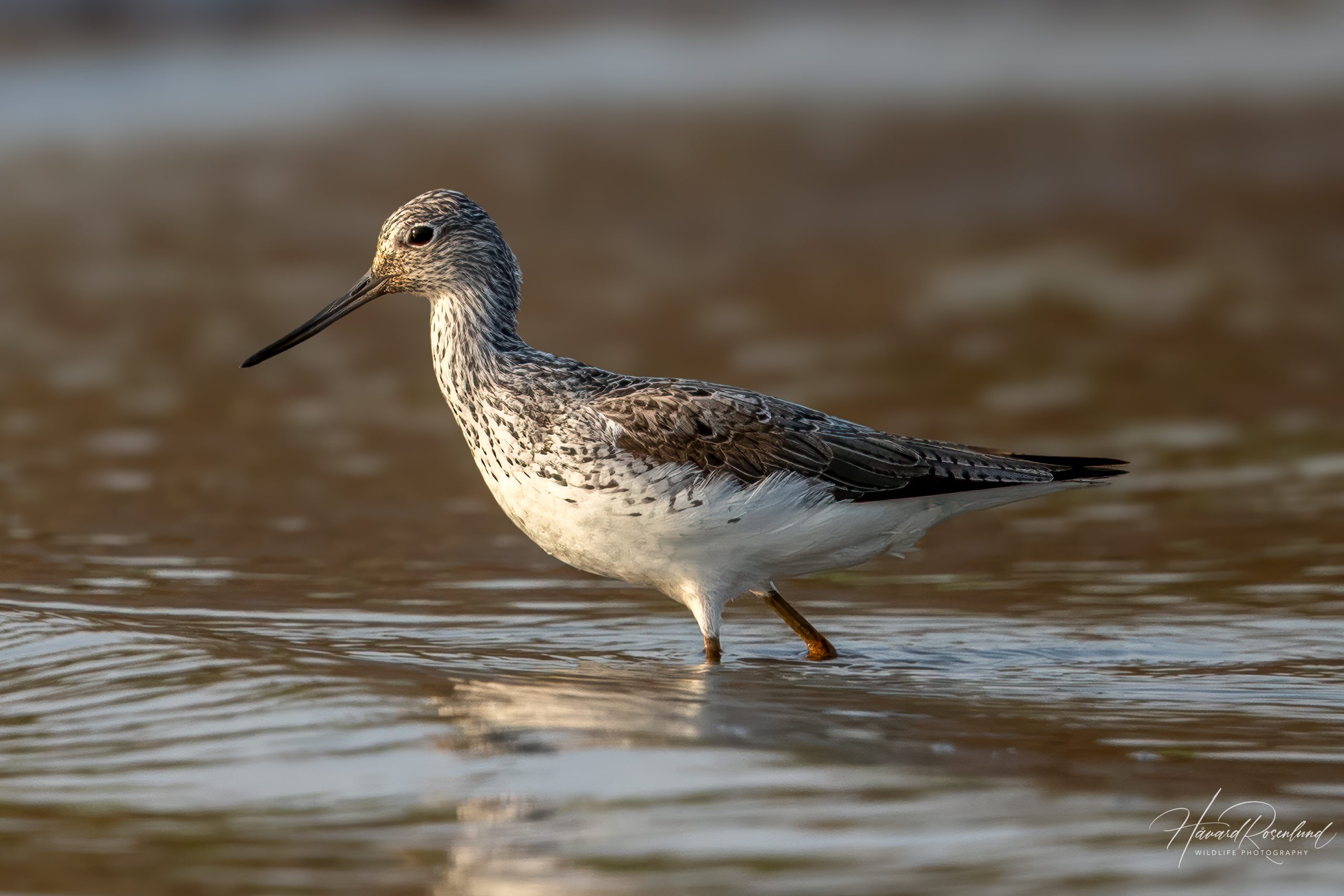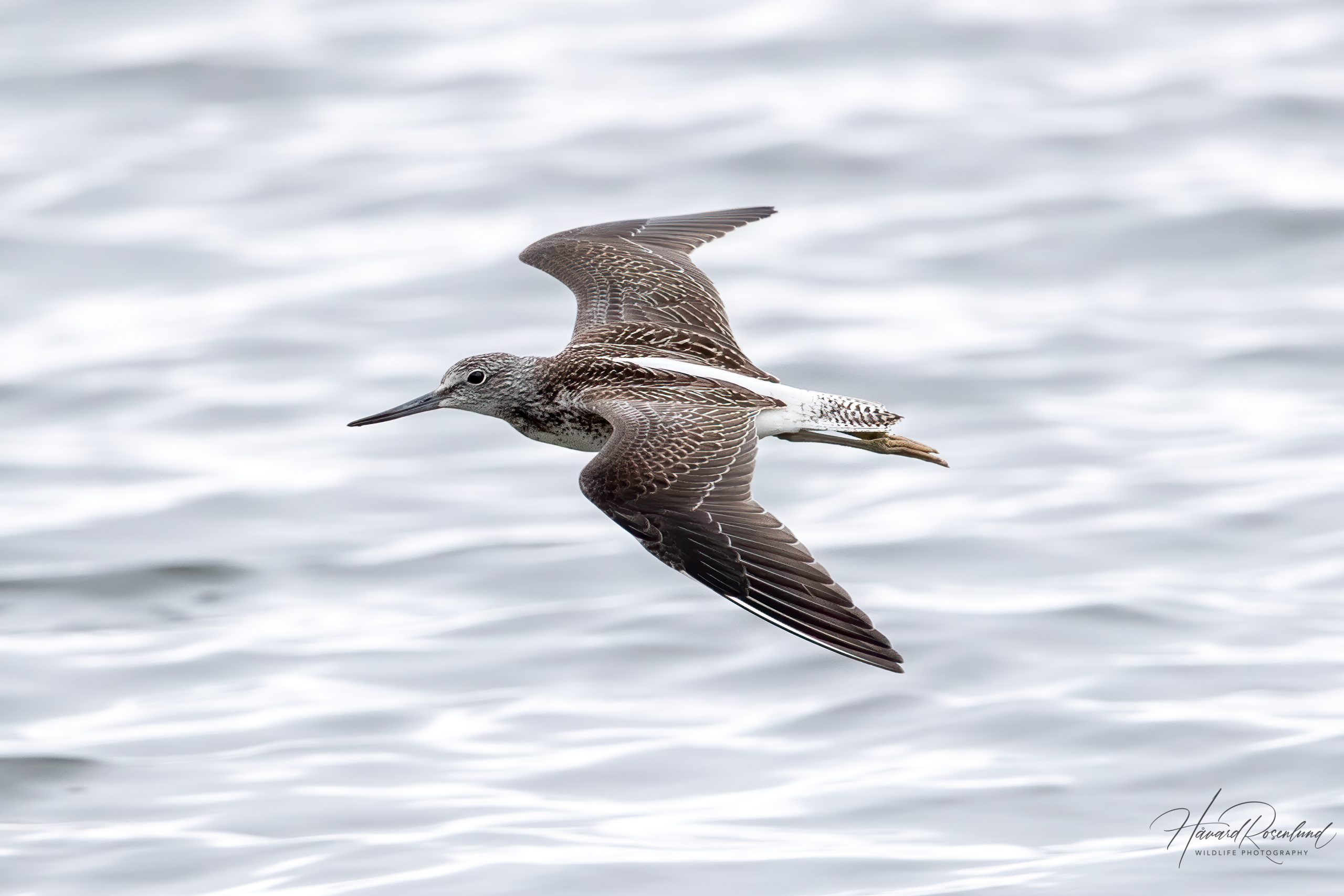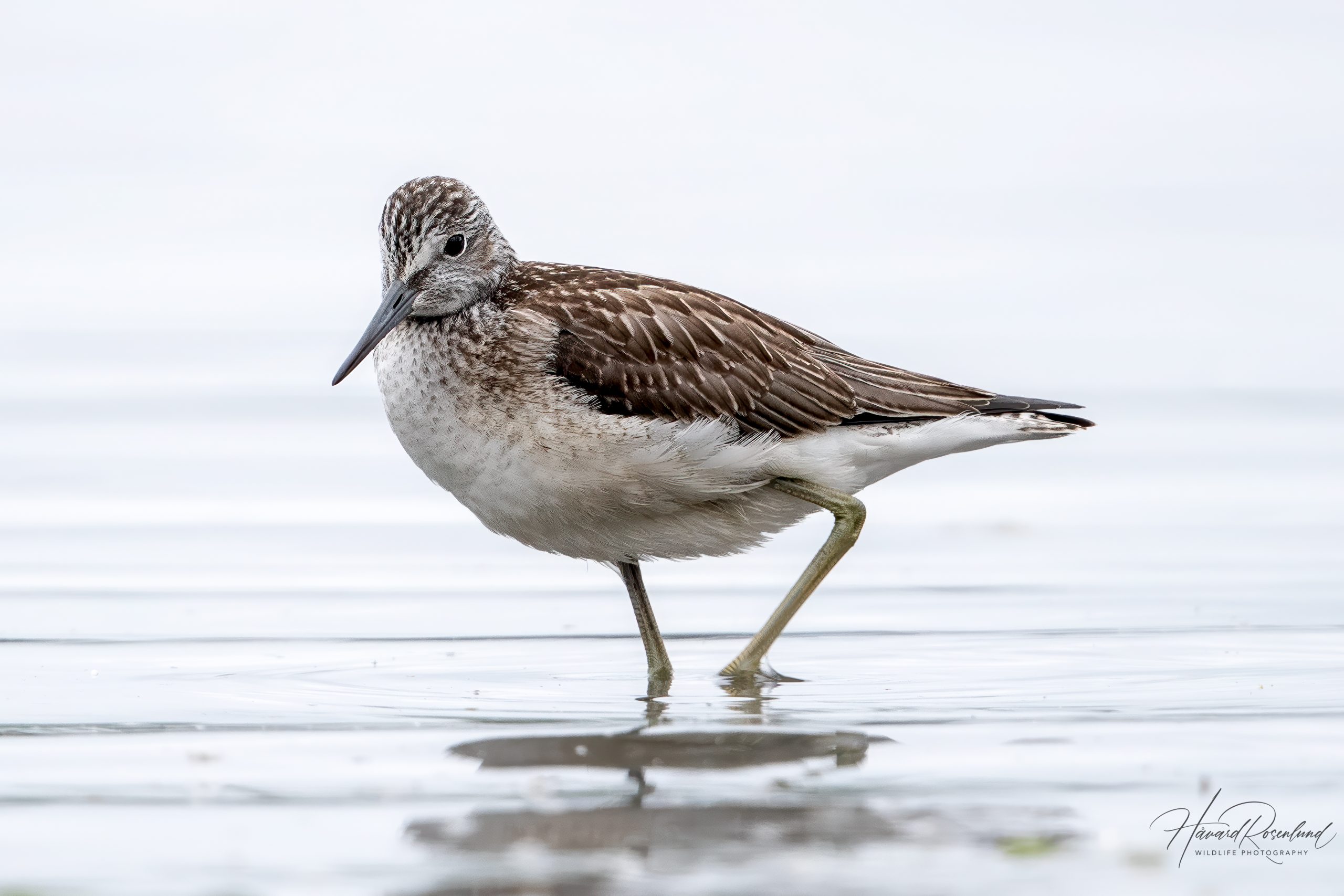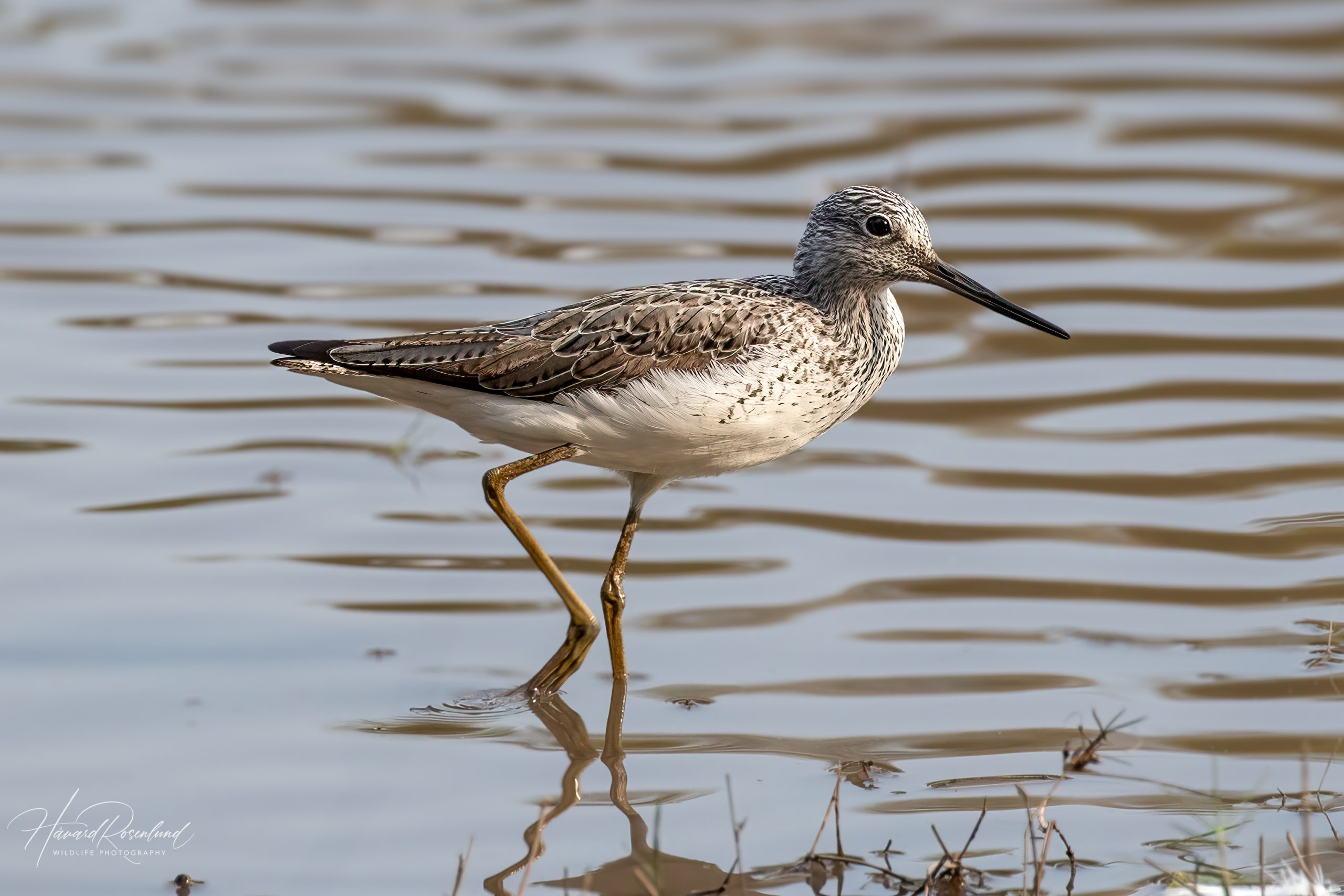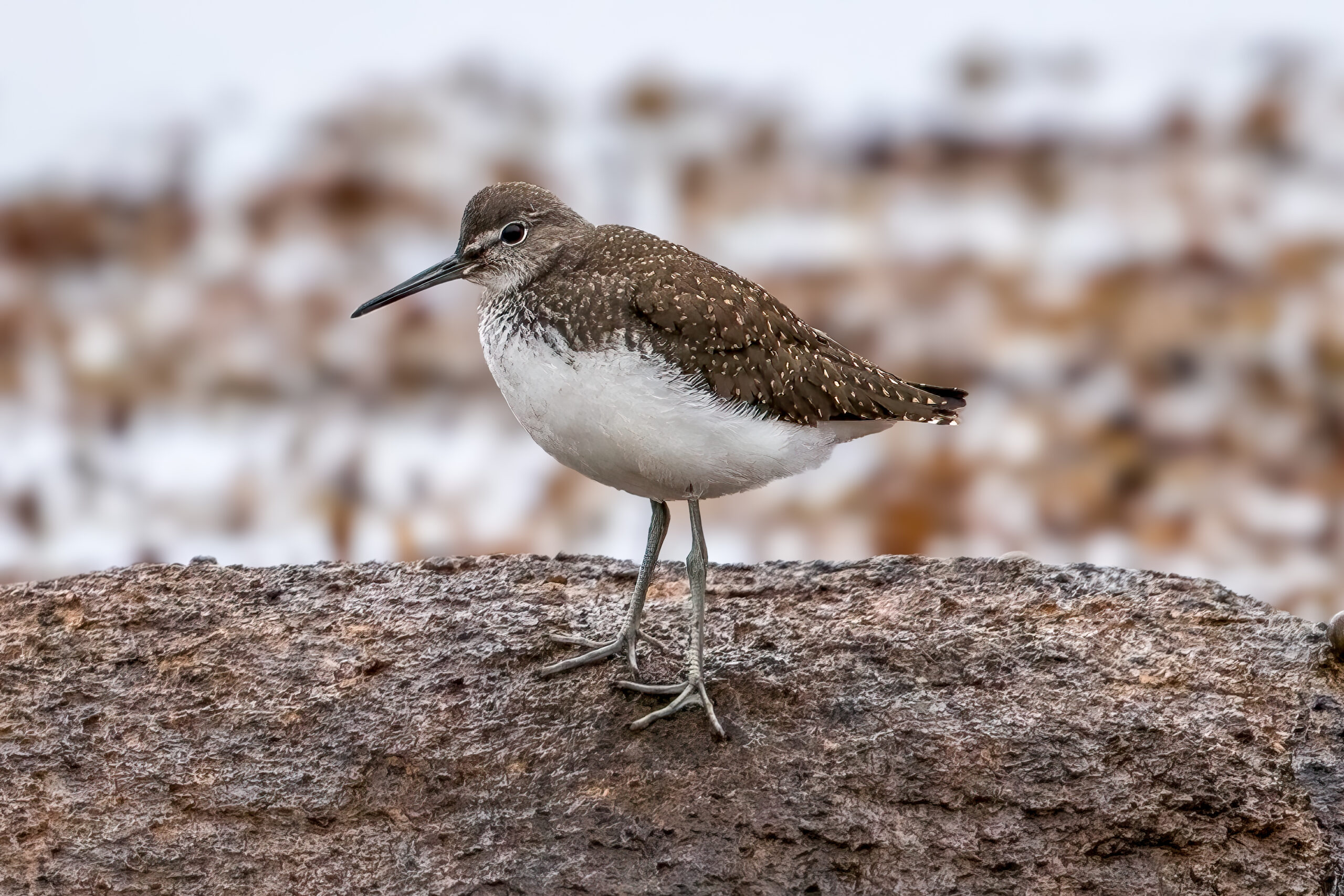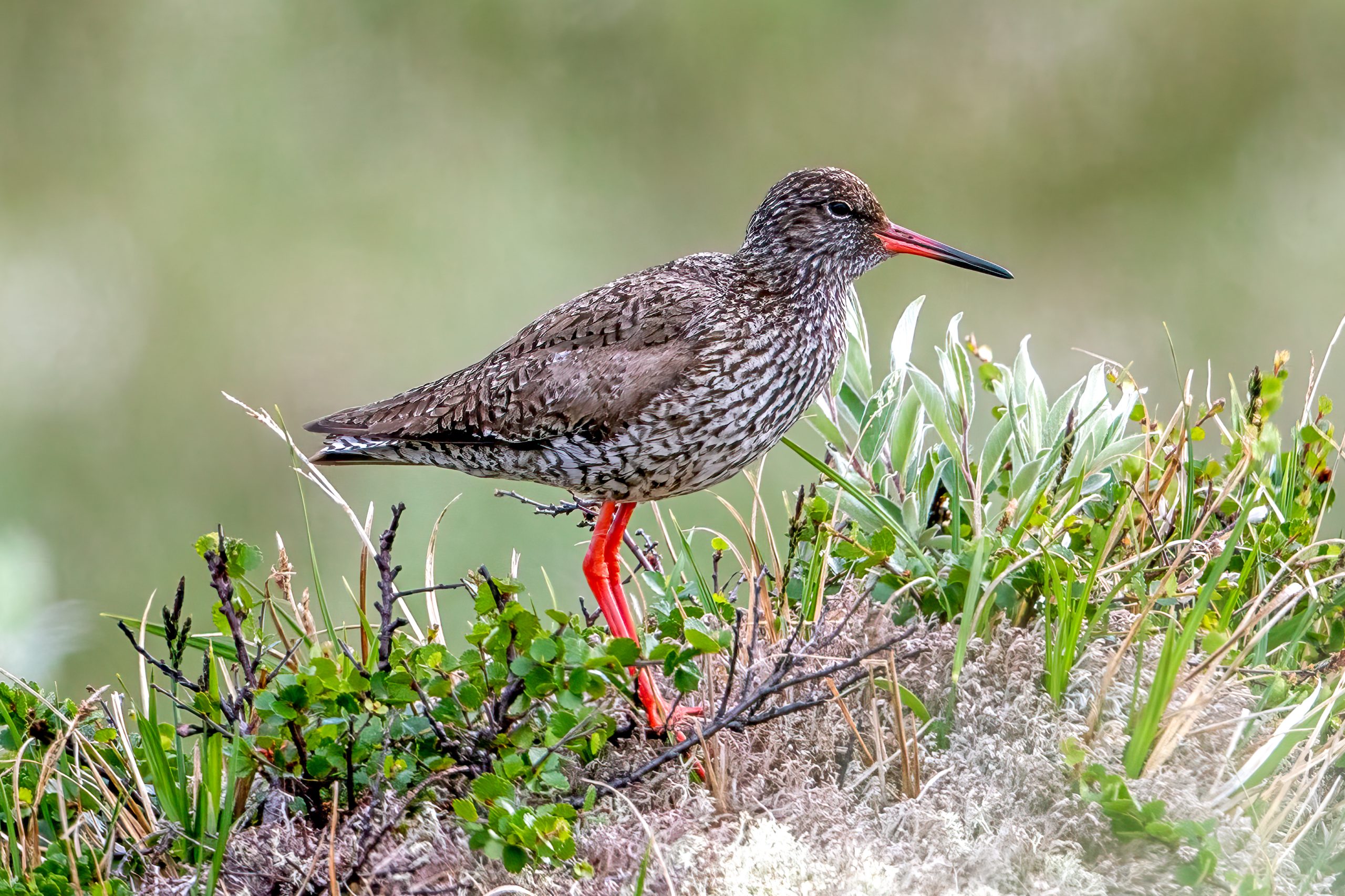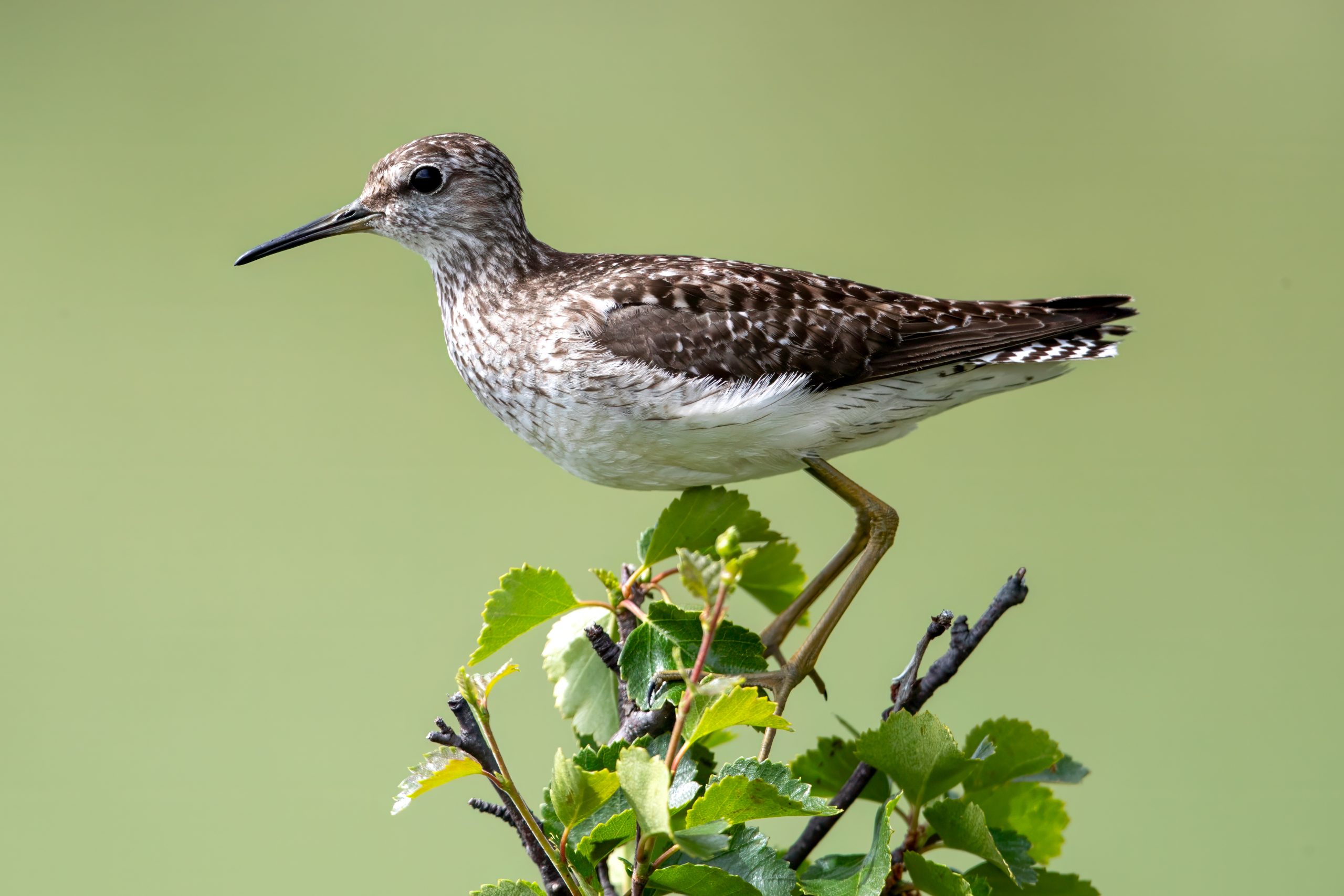Description
The common greenshank (Tringa nebularia) is a large sandpiper with a broad range, breeding in northern Eurasia, particularly across Scandinavia and Russia, and migrating to various parts of Africa, southern Asia, and Australasia during the non-breeding season. It has a body length of about 30–35 cm (12–14 in) and a wingspan ranging from 61–69 cm (24–27 in). This bird is characterized by its long, slightly greenish legs and a distinctive long, slender bill that is slightly upcurved. The plumage is predominantly grey-brown on the upper parts with a lighter, streaked appearance, while the underparts are white. In flight, the greenshank exhibits white rumps and a barred tail which are diagnostic features. Its size and the upcurved bill distinguishes it from other sandpipers.
Diet & habitat
The common greenshank inhabits a variety of wetland environments including estuaries, marshes, tidal mudflats, and the edges of freshwater lakes and rivers. They show a preference for shallow waters where they can easily forage. Their diet primarily consists of small aquatic invertebrates such as crustaceans, mollusks, and insects, as well as small fish and amphibians. They forage by walking steadily through shallow water or along the shore, using their long bills to probe the mud and water. Occasionally, they are observed stirring up the substrate with their feet to dislodge prey or chasing fish by running through the water.
Migration
The common greenshank is a long-distance migrant. They breed in the northern regions of Europe and Asia, including the tundra and taiga zones of Scandinavia and Russia. Migration typically begins in late summer to early autumn, with birds heading to their wintering grounds which extend from Africa to southern Asia and Australasia. These birds undertake extensive migrations, often traveling several thousand kilometers between breeding and wintering sites. They are known for their strong and direct flight during migration.
Nesting
Breeding for the common greenshank occurs from late May to early July. They typically nest on the ground in open habitats like tundra and moorland, often in close proximity to water. The nest is a shallow scrape lined with vegetation, placed in a concealed location. Females lay a clutch of 3–4 eggs, which are incubated by both parents for about 23–25 days. The chicks are precocial, meaning they are relatively mature and mobile from the moment of hatching. They leave the nest shortly after hatching but are cared for by their parents until they are able to fly, usually around 25–30 days after hatching.
Status
The common greenshank is classified as least concern by the IUCN Red List. Despite facing threats such as habitat loss and degradation due to wetland drainage and pollution, the species maintains a stable population trend thanks to its extensive range and adaptability to different habitats.





